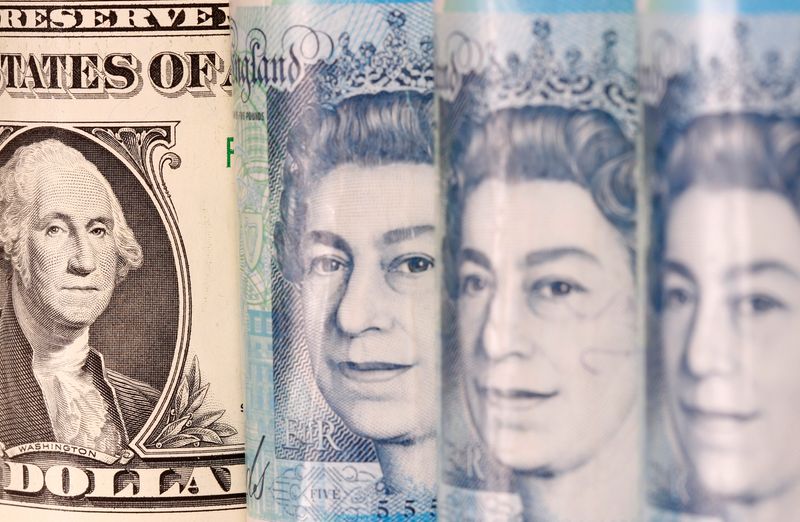By Amanda Cooper
LONDON (Reuters) - The pound rose on Monday, but remained in sight of August's two-month lows, as traders continued to weigh up the outlook for sterling, which analysts think could be at risk for more weakness over the course of this month.
Data on Friday showed the U.S. economy generated more jobs than expected in August, but offered evidence that the labour market is starting to show signs of slowing, which dented the dollar and helped the pound post its best weekly performance in more than a month.
Sterling was last up 0.3% at $1.26265 on Monday. It is still showing a gain of 4.4% for the year so far, neck and neck with the Swiss franc for the title of best-performing major currency against the dollar.
But it's far cry for the year-to-date gain of 8.6% that it showed just over two months ago.
Money markets show traders believe the Bank of England has at least one, if not two, more rate hikes in the pipeline.
The chances of a quarter-point rise when the BoE meets on Sept. 21 are nearly 90%, with another rate hike almost guaranteed in November too.
That is in sharp contrast to the U.S. market, where traders believe the Federal Reserve is unlikely to raise rates again for the foreseeable future, or the euro zone, where investors think there's a 50/50 chance of a lone rate rise by the end of 2023.
Part of sterling's appeal this year has been the prospect of higher interest rates. If the BoE does raise rates twice more, Britain will have the highest interest rates across the G10 - something that has not happened in at least 40 years.
Revised official data on Friday showed the UK economy surpassed its pre-COVID-19 size in the final quarter of 2021, a much earlier recovery from the pandemic than previously estimated and ahead of other big European countries.
That said, analysts believe two more hikes might be overkill and the BoE is more likely to deliver just one more. Investors are starting to prepare for this eventuality too.
Data on Friday showed that, in the week to Aug. 29, speculators cut their long position in sterling by almost a fifth. Their bullish bet on the pound is still close to its largest since mid-2014.
"We do still, however, believe that the market prices about 20bp too much into the BoE tightening cycle and that sterling can soften a little in the fourth quarter," ING strategist Chris Turner said.

This week, the data calendar is fairly light, with just final business activity surveys for August, a measure of consumer spending and another housing-market index, leaving sterling with few immediately potentially positive catalysts.
"We need to push back through the $1.2800 area to diminish downside risk and a move towards $1.2400," CMC Markets strategist Michael Hewson said.